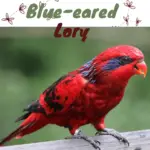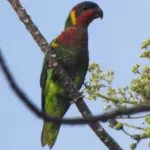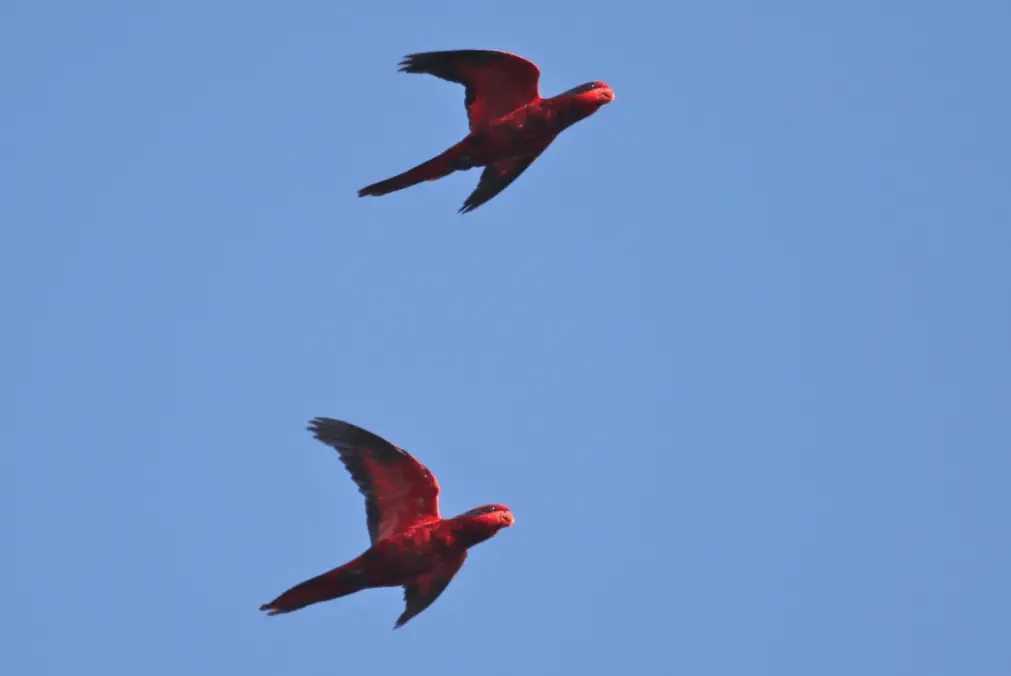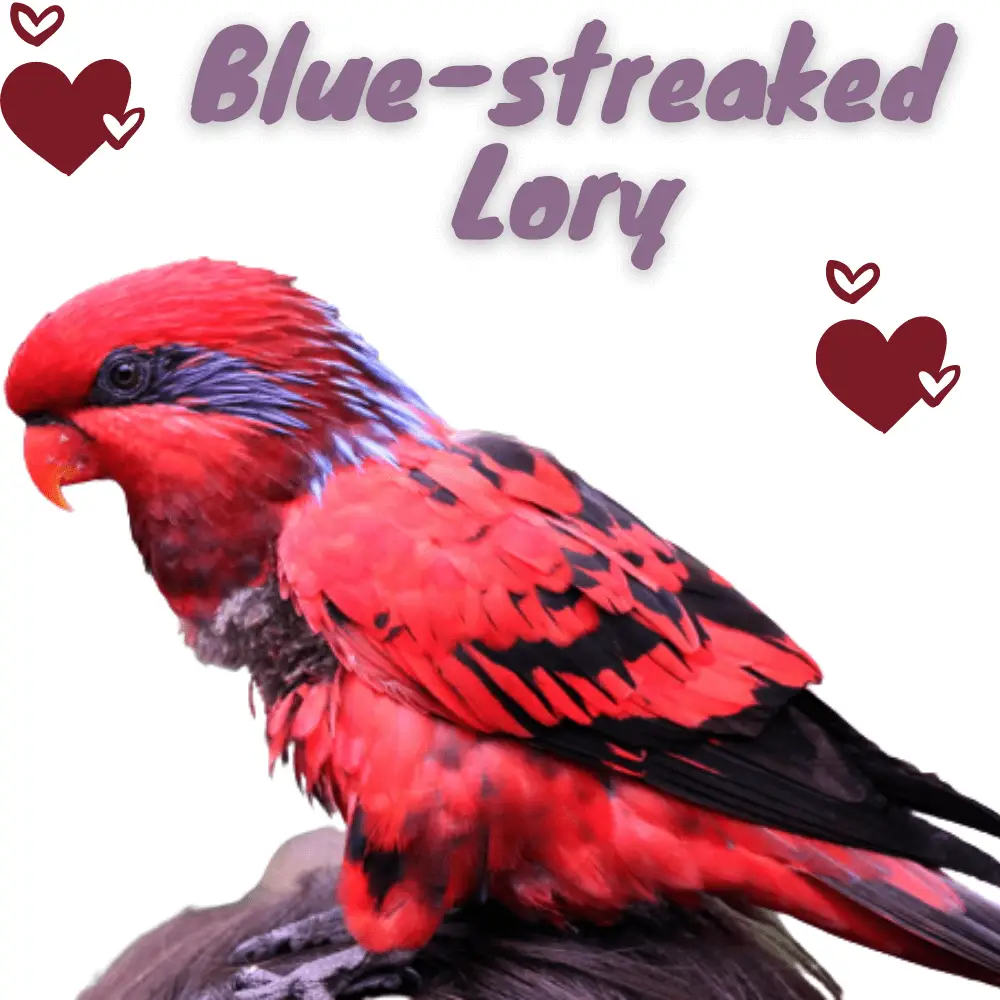
Blue-streaked Lory 31 cm. Similar to E. cyanogenia but broad blue stripe back from eye joins blue-streaked mantle; wing-coverts are red heavily edged black, primaries almost all black; thighs and flanks red. Immature has underparts edged blue-black, bill brownish.
Monotypic.
Subspecies
Monotypic.
Distribution
Tanimbar Is (mostly Yamdena, also Lariat), in E Lesser Sundas. Probably introduced to Damar and maybe Babar (also in E Lesser Sundas), were uncommon, and to Kai Is (in SE Moluccas), where only two recent records.
Habitat
Primary forest inland, but apparently commoner in coastal secondary forest, plantations, and mangroves.
Diet and Foraging
No information; visits coconut plantations and sago palms.
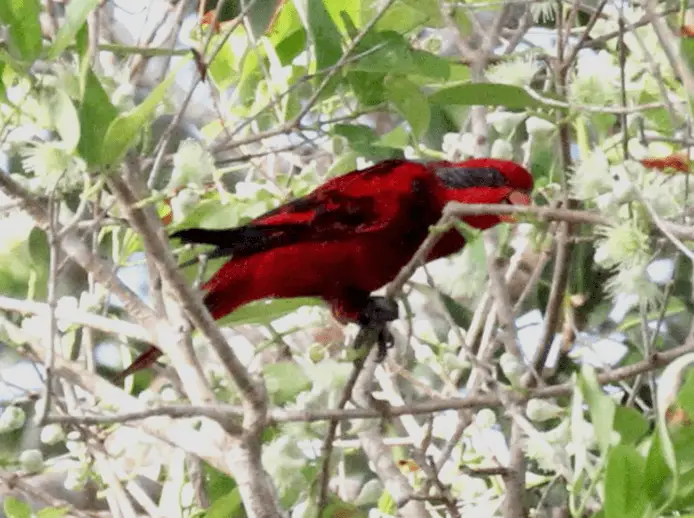
Blue-streaked Lory
Sounds and Vocal Behavior
In-flight, a shrill “kreet!” or “kchi-reet!”. When perched, the repertoire is more extensive including a variety of different shrieks, some more grating, and others higher-pitched and shrill. Quality is quite different from E. bornea.
Breeding
No information from wild. In captivity: two eggs; Blue-streaked Lory nestling period lasting as long as 12 weeks.
SOURCE: Maria Wittek Feil
Conservation Status
Not globally threatened. CITES II. Currently considered Near Threatened. A BirdLife “restricted-range” species. Locally abundant, especially along the coast, but trapping for the cagebird trade is heavy, with some habitat destruction.
In the years 1983–1989 recorded international trade averaged 3198 birds annually, resulting in pressure to include the species on CITES I,
but fieldwork in 1993 on Yamdena, which represents c. 55% of the species’ range, revealed an estimated 220,000 ± 52,000 birds, and past catch-rates of less than 2% were judged unlikely to have caused any decline.

